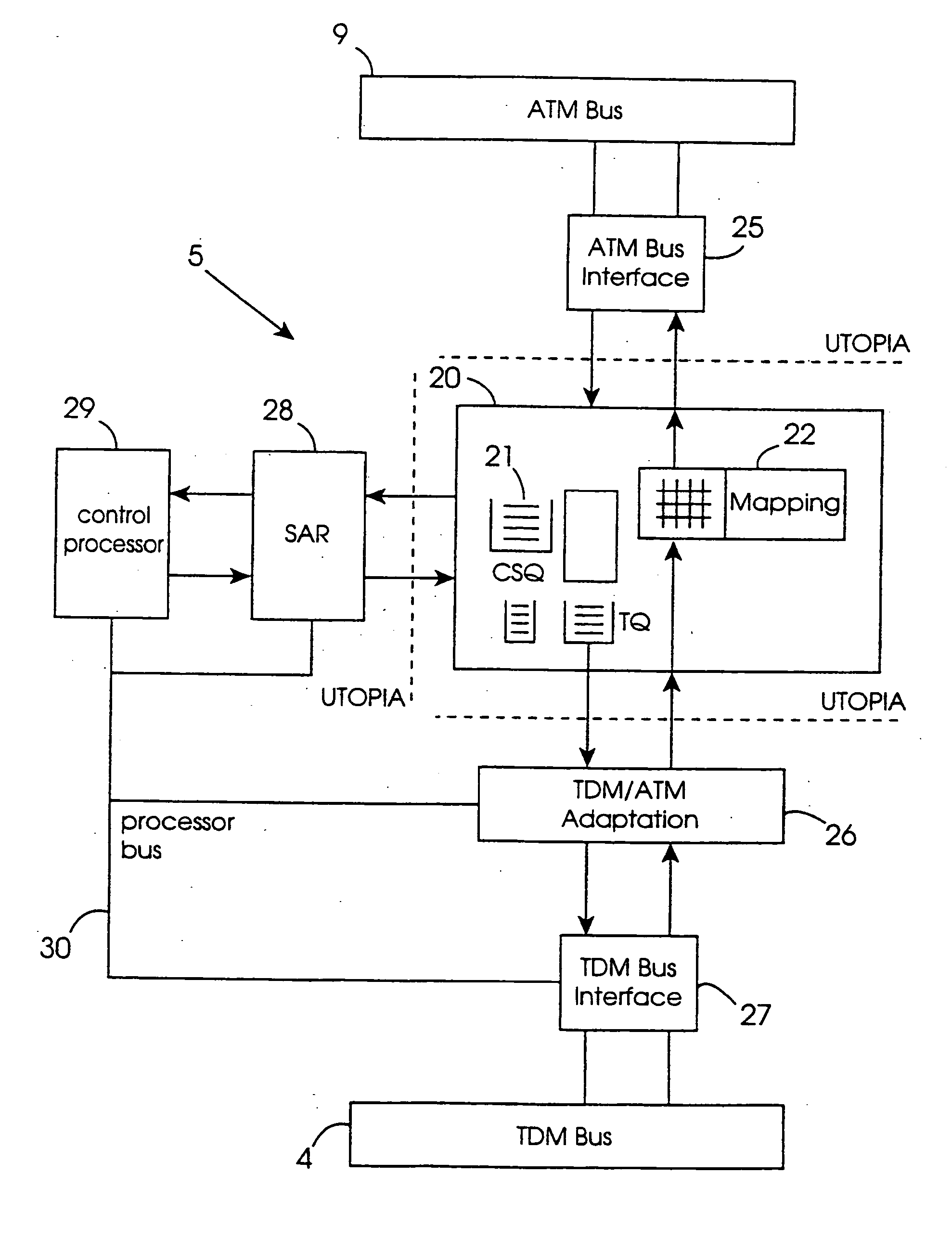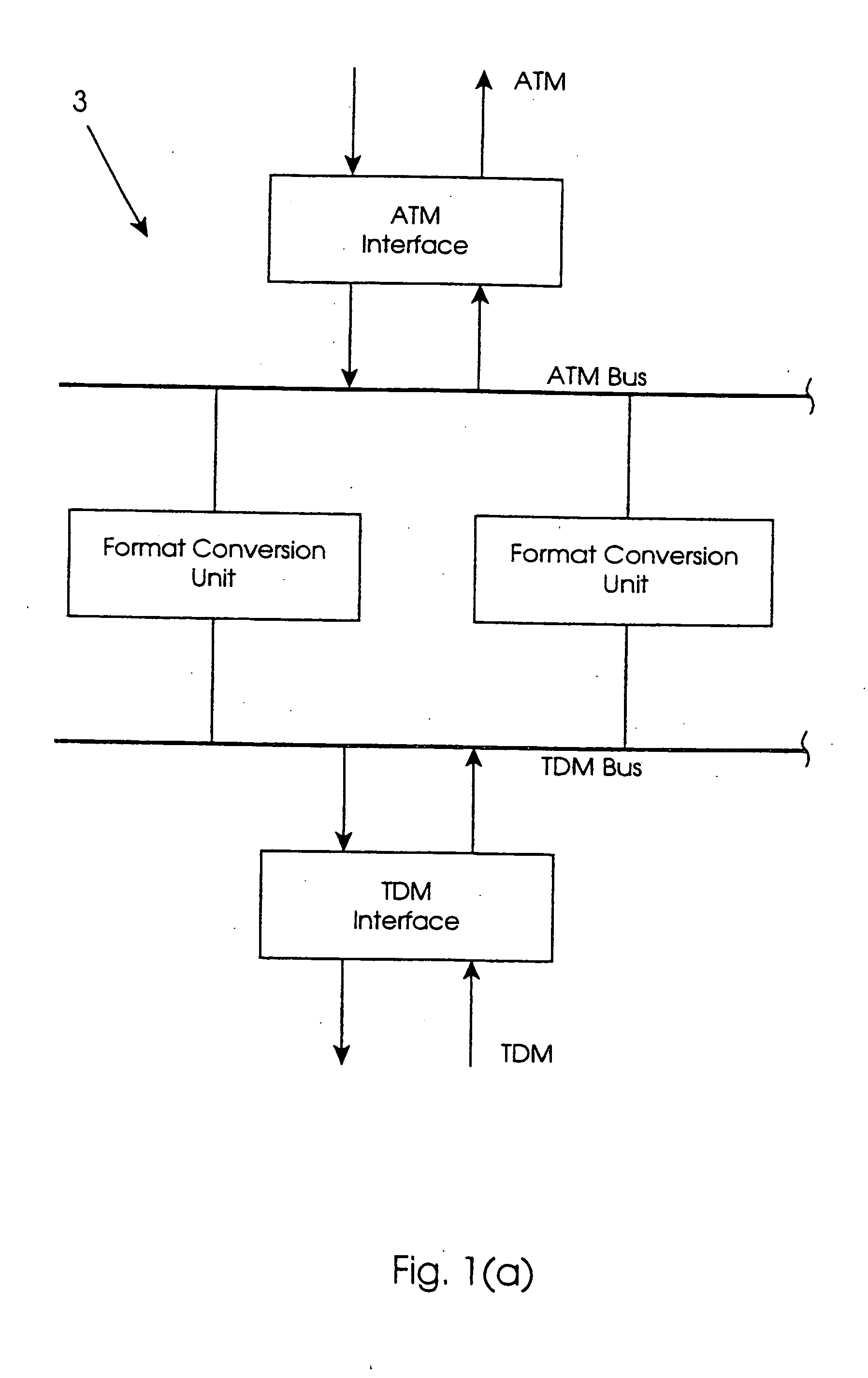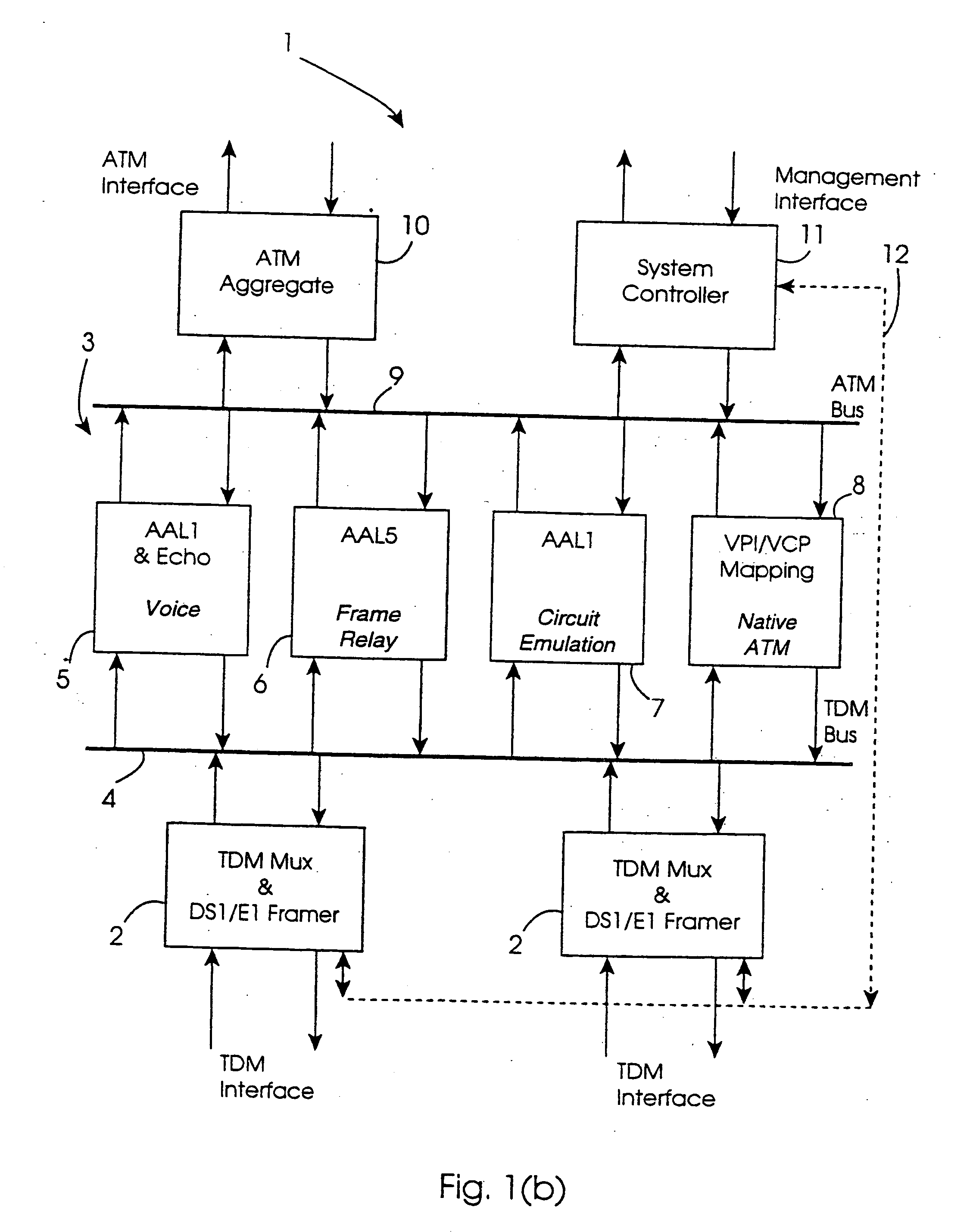Telecommunication systems
a technology of telecommunication systems and communication networks, applied in transmission, time-division multiplexing selection, electrical equipment, etc., can solve the problems of not being able to guarantee the bandwidth of a call for the duration of the call, the technique is not connection-oriented, and the tdm is not particularly effective for data traffic, etc., to achieve simple and effective ways of efficiency, flexibility in the range of cell-processing operations, and simple and easy control
- Summary
- Abstract
- Description
- Claims
- Application Information
AI Technical Summary
Benefits of technology
Problems solved by technology
Method used
Image
Examples
Embodiment Construction
[0041] Referring to the drawings, there is illustrated a telecommunication system 1. The purpose of the system 1 is to provide bi-directional conversion between TDM signals on one side and packet-based signals on the other. In this embodiment, the packet-based signals are ATM signals. Conversion is provided in a comprehensive manner whereby a wide variety of different services may be incorporated in the incoming ATM or TDM signals.
[0042] FIGS. 1(a) and 1b) show overviews of the system 1. Referring initially to FIG. 1(a), the system 1 is shown at a high level. A bi-directional TDM interface interfaces with external systems in the TDM network and a bi-directional ATM interface interfaces with external systems in the ATM network. Within the system 1, TDM signals are delivered onto, and retrieved from, a TDM bus 4 and ATM signals are delivered onto and retrieved from an ATM bus 9. The buses are part of a format converter which also comprises multiple format conversion units connected b...
PUM
 Login to View More
Login to View More Abstract
Description
Claims
Application Information
 Login to View More
Login to View More - R&D
- Intellectual Property
- Life Sciences
- Materials
- Tech Scout
- Unparalleled Data Quality
- Higher Quality Content
- 60% Fewer Hallucinations
Browse by: Latest US Patents, China's latest patents, Technical Efficacy Thesaurus, Application Domain, Technology Topic, Popular Technical Reports.
© 2025 PatSnap. All rights reserved.Legal|Privacy policy|Modern Slavery Act Transparency Statement|Sitemap|About US| Contact US: help@patsnap.com



